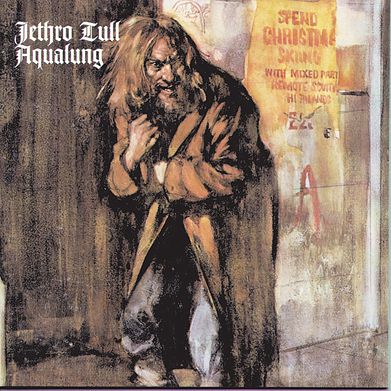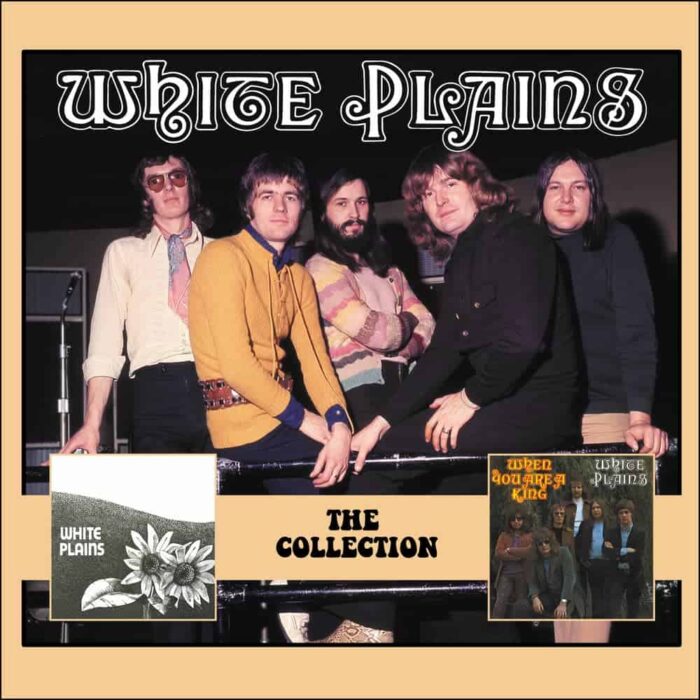The Article
Jethro Tull’s Aqualung
23rd September 2015

Label: Chrysalis
Year: 1971
The band’s all-time classic album, Aqualung was Jethro Tull’s biggest release and, according to their management, still out-sells everything else in their back catalogue. The album has always been viewed as a concept album with, lead singer, band leader and principle song-writer, Ian Anderson’s forthright views on organised religion populating a large proportion of the album. Anderson rejected, often quite angrily and saractically, that the album had any sort of ‘concept’ about it, “I disagreed, although there were three or four songs that kind of hung together. So I said, ‘OK, let’s give them the mother of all concept albums.’ Which is where the next album, Thick As a Brick came from, the concept album skit, “Some of the songs that I wrote on Aqualung weren’t even the thoughts and expressions of a 23-year-old; they were the songs of a 14- or 15-year-old. The sentiments I was pursuing in some of the more lyrically aggressive songs like Wind Up or My God were about my experiences and confusion about religion when I was a schoolboy. But it seemed relevant to take those emotions and put them into songs as a young 20-something.”
However, Aqualung does address other themes that are just as important as religion. Aqualung, Cross-Eyed Mary and Up to Me looks at those who have found it hard to cope in society or are down on their luck whilst Wind Up and Mother Goose looks at the difficulties young people have when growing up. Anderson’s feelings while traveling to visit his sick father are also addressed in Cheap Day Return.
“Writing was always my forte,” said Anderson, “The musical side of me matured at a much slower rate than my songwriting ability.” Anderson honed his lyrical focus into what, he viewed, divided people and worked continually to expose those elements of culture and religion that separated them, “At the time, there was snobbery among the religious set here that acted like a giant wall between people. I wanted to capture those attitudes.”
Anyone familiar with Jethro Tull knows that Anderson’s lyrics are intense and complex, mixed occasionally with simple nursery rhymes, “My songwriting reflects a lot of what I’m thinking at that moment,” said Anderson, “It’s stream of consciousness, so if I read something and it seems too intense, I add elements of comic relief. Although I think that even the simpler concepts emphasize the metaphors in the songs.”
Tull changed their line-ups with regularity. For this classic album, the band consisted of: Martin Barre – electric guitar and descant recorder; Clive Bunker – percussion; John Evan – piano, organ, mellotron plus Jeffrey Hammond – bass guitar, alto recorder and odd voices.
Ian Anderson sang, dabbled with the acoustic guitar and played his trademark flute, “When I heard Eric Clapton play electric guitar in my late teens, I realized that I was never going to be that good. So I decided to trade in my ’60s Fender Strat for a $50 student-model flute. To my knowledge, Eric Clapton did not play flute, nor did Jimi Hendrix or Jimmy Page, so at least I was in a field of music where I might be the big fish in a small pool. So I have to thank Eric Clapton for giving me my start on the flute. A couple of years later I got back to playing acoustic guitar and I still played a little electric on some of the Jethro Tull songs.”
One of the tragedies experienced by Tull fans was when Aqualung arrived on CD in the early ‘80s. These people discarded their original vinyl and bought a piece of tosh. Anyone finding an early Aqualung CD album (too much treble, no bass) owed it to humanity as a whole to jump up and down on it immediately. Fortunately, there were improved later CD releases. The 1998 re-release improves the bass and lowers the treble, However, it is arguable that the treble is too low and there was a school of though that the original masters were not used during its production. One of the best CD versions was released via DCC and mastered by Steve Hoffman. The volume increased during mastering which helped the dynamic range somewhat. For vinyl, the original was average. DCC’s vinyl verson was the very good. Mobile Fidelity’s effort use the American EQ’d version which arguably adds too much unnatural bottom end. The problem is, you can’t find a DCC version any more as the company’s dead and buried.
Later Classic Records (RIP), from the USA, released a vinyl version, with the full co-operation of Ian Anderson who supplied his own master tapes, I hear, for the occasion. The final album is open, airey, dynamic, well balanced. Of more recent vintage, there is a rather expensive box that you might still be able to buy plus a more reasonably priced Steven Wilson-mixed vinyl issue, although I cannot vouch for the sound quality on those.


